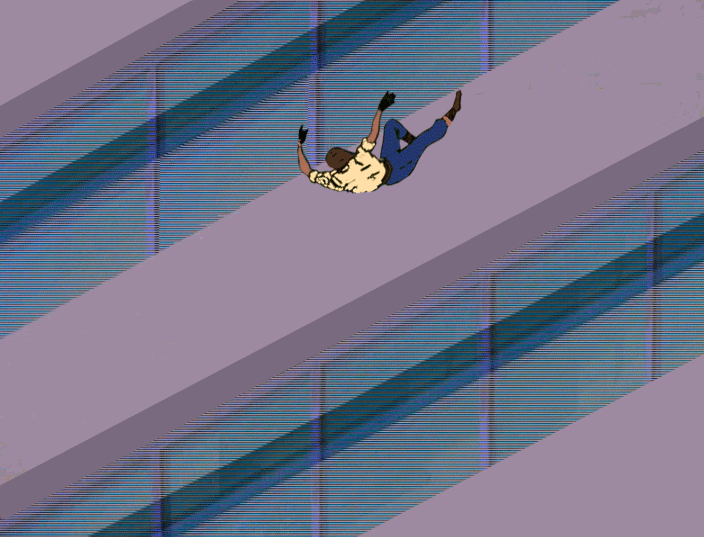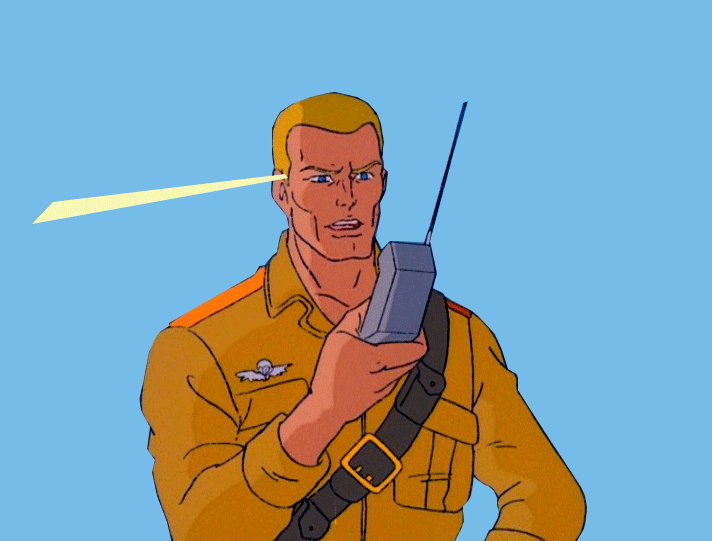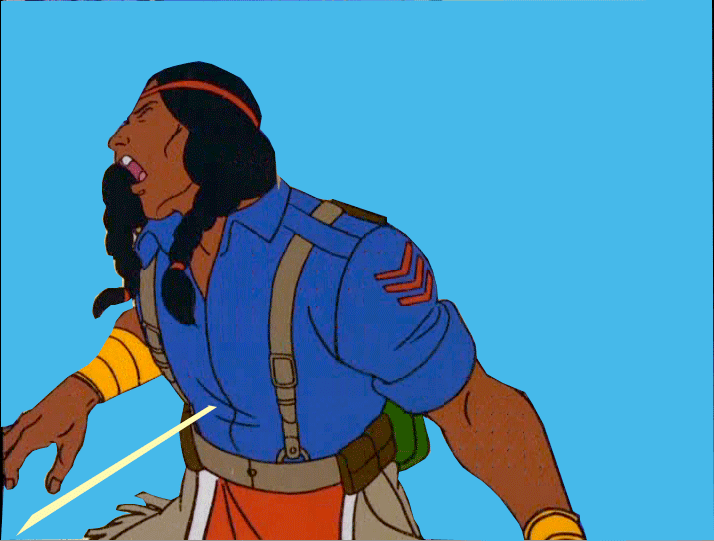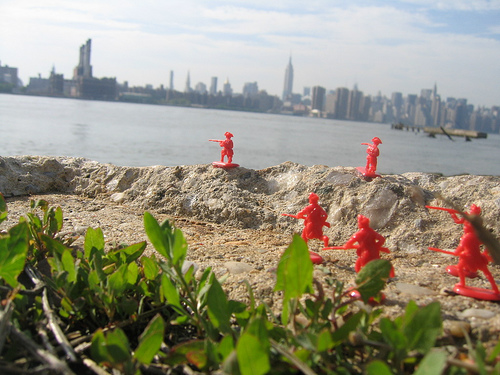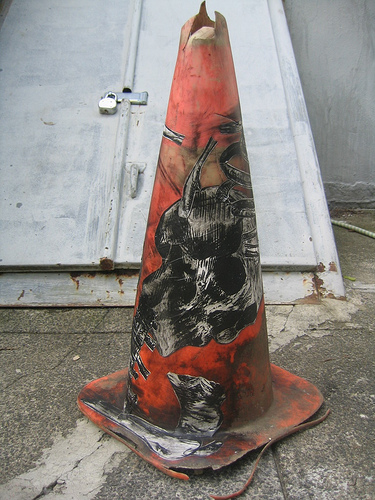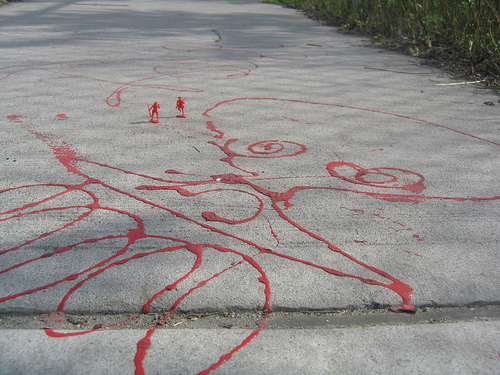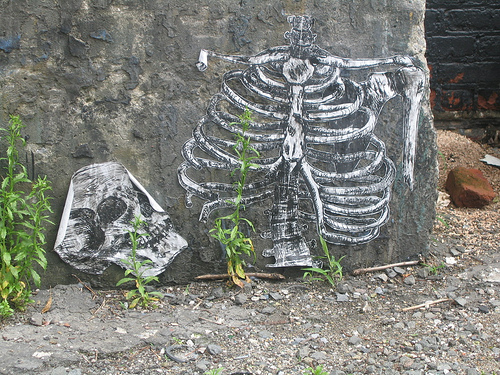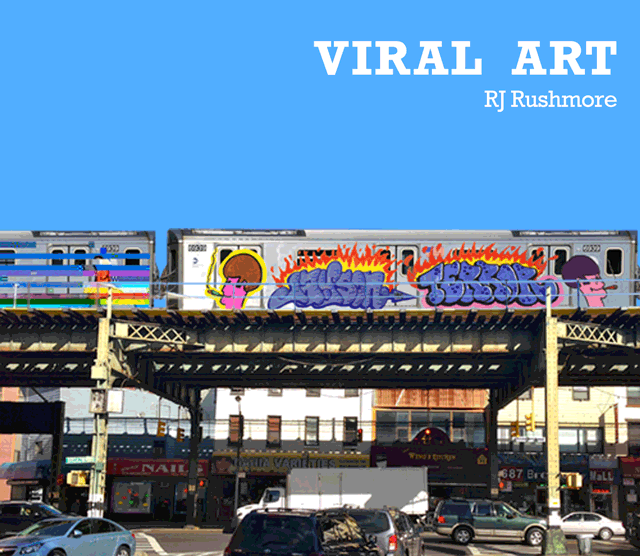
Two weeks ago, I announced that Viral Art: How the internet has shaped street art and graffiti, my new ebook, was set to launch on December 16th. Excerpts have appeared on Hyperallergic, Complex.com and Brooklyn Street Art, I was interviewed over at Graffuturism and the book even got a shout-out from Shepard Fairey. Well, today’s the day. Viral Art is live and you can read it now at ViralArt.net and download it as a PDF or find it in the iBooks Store now.
I want to thank everyone who has been sharing the news about Viral Art these last two weeks, especially everyone who supported the Thunderclap campaign. Just this afternoon, there have been over 200 posts about Viral Art across Twitter, Facebook and Tumblr. So, a big thank you to everyone who participated in that. Promoting this book is an entirely grassroots effort, and I’ll be forever grateful for your help.
In case you didn’t catch that last post or you’ve forgotten, here’s a reminder of what Viral Art is all about…
What is Viral Art?
It’s an ebook that you can read online or download to your computer or ereader. It’s full of text, hyperlinks, photos, animated GIFs and embedded videos.
What is Viral Art about?
Viral Art traces how the histories of street art and graffiti have been shaped by communication technologies, from trading photos by hand to publishing books to sharing videos online. It’s the most comprehensive look to date at how the internet has affected street art and graffiti. Conceptualizing the internet as a public space, I conclude the book by arguing that the future of street art and graffiti may lie in digital interventions rather than physical ones.
Why does Viral Art matter?
If you want to understand street art and graffiti, you have to understand how books, movies, magazines, photographs and the internet have affected artists and fans. Viral Art gets into all of that.
Today we live on our laptops and smartphones, so I argue that the best way for street art and graffiti to stay relevant is for artists to take over the public space of the internet. It’s a claim sure to cause controversy in the street art, graffiti and internet art communities.
Viral Art isn’t just another street art book cheer-leading the movement on. It’s history and theory with a critical stance, and my plea to keep the core values of street art and graffiti alive in a digital world.
What else is inside?
In researching for this project, I interviewed over 50 members of the street art and graffiti communities. In Viral Art, you’ll find brand new interviews, quotes and anecdotes from Banksy, Shepard Fairey, KATSU, Poster Boy, Ron English, Martha Cooper and many more.
Another cool touch is the cover, which you can see at the top of this post. It’s an animated GIF designed by General Howe, featuring artwork by Diego Bergia, General Howe and Jay Edlin, as well as photographs by Martha Cooper and myself.
What does this “book” cost?
Nothing. You can read Viral Art for free at ViralArt.net. There are also PDF and EPUB versions available for download.
How can fans support the book?
This book is the result of two and a half years of mostly-unpaid labor. It’s being self-published. My marketing budget consists of a few bucks for ads on Facebook. Major publishers spend thousands or even tens of thousands of dollars marketing everything they produce, but this project has no book tour or publicist or anything like that. There’s only your support. If Viral Art sounds interesting, or you read it and you think it is interesting, please tell your friends.
Where can people read Viral Art?
Just go here to read it online, or you can also download it to your computer or ereader.

